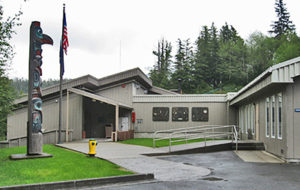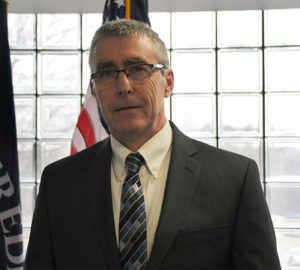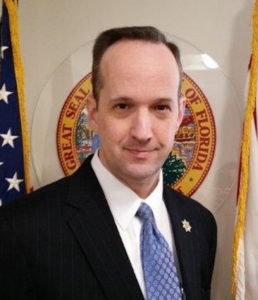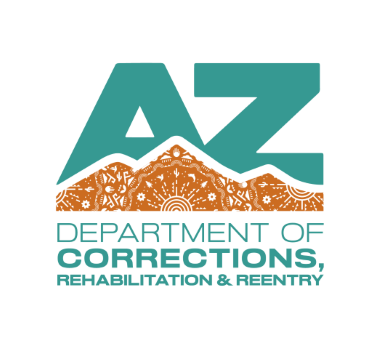How Maintenance Can Make or Break Facilities

By Lindsey Coulter
A strong facility maintenance program can make a significant impact on jail and prison safety and operations. Many facility maintenance leaders across the country are constantly weighing preventative maintenance needs against tight improvement and construction budgets, all while making the case for investing in more modern and environmentally sustainable technologies.

Photo Credit: Alaska Department of Corrections
Correctional News spoke with four facilities maintenance professionals from across the country, responsible for some of the nation’s largest correctional complexes to some of its most remote, to learn more about the crucial roles of regular facility maintenance and proactive improvement.
Clifton Reagle, facility manager II and capital improvement section chief, is responsible for all capital improvements for the Alaska Department of Corrections. Deborah Hysen is the director of facility planning, construction and management for the California Department of Correction and Rehabilitation (CDCR). Jim Aleckson serves as institutional support services director and capital resource administrator for the Minnesota Department of Correction. And Darren Fancher is the facilities management and building construction director for the Florida Department of Corrections (FDC).
Q: What maintenance issues pose the biggest challenges to effective operations?

Reagle: Aging infrastructure. With the plumbing, lighting, HVAC and locking devices — and the wear and tear a correctional facility takes on — it’s a 24/7 operation.
Hysen: Because of our aging portfolio, the population we serve and the nature of secure construction within a prison setting, large distribution systems prone to excessive use — especially those concealed in concrete structures or underground — are failing and are very costly to fix. Water, wastewater, electrical and HVAC distribution seem to be the biggest challenges. Most of these systems have myriad components that have outlived their useful life, and in many cases, replacement parts are simply no longer made, requiring complete redesign and replacement. Large-scale prison expansion in the 1980s and 1990s means many of these systems are failing simultaneously due to age across the state.

Aleckson: One challenge is having the appropriate combination of staffing and funding in order to maintain an effective preventive maintenance program. Without proper funding or staffing, maintenance departments are unable to keep up with the general maintenance demand, forcing the departments to play a reactive role versus a proactive role.
Fancher: Roof repairs, perimeter detection systems and plumbing systems tend to pose the biggest maintenance-related challenges. The building systems need to be effective and efficient, but they absolutely have to be manageable. In a prison environment, maintenance challenges can have downstream effects. For example, relatively simple problems such as ventilation or plumbing issues can unnecessarily burden correctional officers who then may feel compelled to leave their posts or relocate inmates to deal with the maintenance.
Q: What role does facility management and maintenance play in ensuring inmate and staff safety?

Reagle: We actually have a lot to do with the safety of facilities, but it’s more related to Occupational Safety and Health Administration (OSHA) worker safety practices. We don’t typically go into the security arena, but when you’re dealing with wet, slippery floors or handling problem inmates, all kinds of safety-related issues cross over. We keep safety data sheets for hazardous chemicals, proper PPE, electrical exposure, lockout/tag out and things that typically are maintenance related.
Hysen: We created a manual called Design Criteria Guidelines (DCG) that we follow religiously. The DCG describes everything from how facilities are placed on a parcel of land for purposes of maintaining lines of sight, including guard towers, to what building material components can and cannot be used, to how maintenance facilities are designed to ensure access for repairs while preventing avenues for inmate escape or use as weapon stock. We also have a Design Compliance Committee that reviews and approves variances to the DCG and a Construction Inspection Branch that ensures conformance to plans and specifications.

Aleckson: Facility management and maintenance plays a large role in ensuring the safety of inmates and staff. Responsibilities include maintaining compliance with all local and state building codes to ensure all life-safety systems, such as fire alarm systems and fire suppression systems, are in place and functional. Building automation systems (BAS), security access control, camera and perimeter detection systems are other examples, which typically fall within the responsibility of the maintenance department for proper operation and maintenance.
Fancher: Staff members maintain all security-related systems, but maintaining the everyday systems such as plumbing, electrical, emergency generators and others also help ensure the safety of staff and inmates. Prisons are safest when all building systems are operating normally.
Read more of this Q&A in the March/April issue of Correctional News, available soon.






